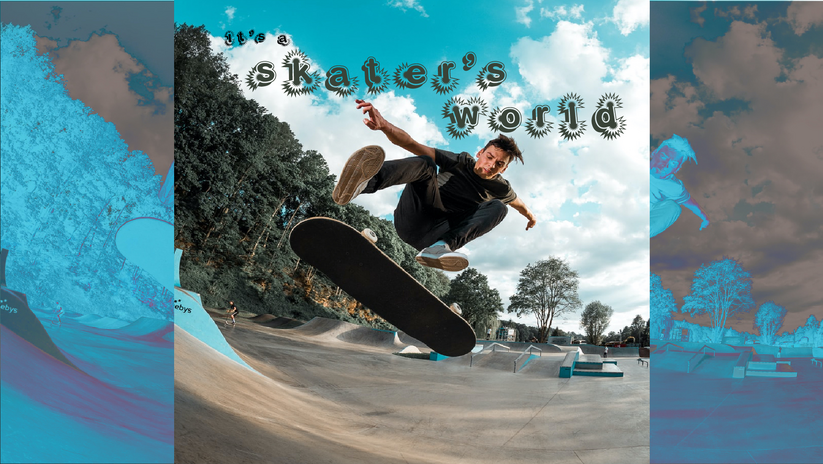For decades, you could look on the streets of any major city in California and find young teenage skaters riding their boards on sidewalks and ramps. However, the rich history of skateboarding has controversial connotations of rebellion, outcast archetypes, and societally defined characteristics. While skating has had specific stereotypes, positive and negative, it is now becoming more mainstream and popular. The skateboard industry has had tremendous success within the past few months, and the history of skate culture is being transformed right now- but why?
Amidst the pandemic, past skaters have had nothing to do but hop back on their boards again, and those who had been meaning to try it have finally found the time. The famous pastime is outdoors, inexpensive, independent, and casual, all of which are part of its appeal in this COVID era. However, besides the factor of free time, there is more reason as to why the previously angsty activity has now seen mainstream popularity. That reason is Gen Z.
Generation Z, people born from the mid-1990s to mid-2010s, have been through unique experiences during the pandemic that no other group of people has. With the hyperfocus on digital content in a socially-distanced world, teenagers have not only adapted to online living the easiest, but they have also created trends, pushed forth ideas, and popularized different concepts that normally would not have been existent in a COVID-free space. With the recent popularization of skating rooting from the pandemic, Gen Z took the sport’s gaining traction to a whole new level and created a boom in an entire industry all from their phone screens.
With tremendously successful mobile apps like TikTok, people can experience the types of content they enjoy and also become exposed to new trending content in a way that is easier than ever. On digital apps, skateboarding has become a widely known and romanticized culture with specific music, fashion, and general aesthetic. Young people who previously would have shown no interest in skating are now seeing an appeal to it, and thus are heading to their local skate shop to buy a board.
The true culture of skating founded by pioneers like Rodney Mullen, Danny Way, and Tony Hawk is not disappearing, but it is being overshadowed by the industry boom of a different skating aesthetic and vibe. Before this, skateboarding had a consistent and freedom-based culture that was niche and specific, but also had negative correlations to burn-out and reject archetypes. The recent boom in the sport is founded on a unique subculture created by young people today that has only some correlation to the activities’ roots.
However, even though what it means to be a “skater” is transforming culturally, it is not all bad. In fact, because of Gen Z’s impact on the industry from a digital perspective, more types of people have freely gotten into the skating world. Female and non-binary skaters now post more videos of them skating on viral platforms like TikTok, which helps more types of people feel welcome in the previously male-dominated industry. When you used to find one girl in a skatepark full of boys, or only men on the cover of Thrasher Magazine, you now can scroll on social media and see hashtags like #girlswhoskate and #skatergirl getting millions of views. So, while the roots of skate culture are not as obvious because of the new industry change, more demographics of people are adding to the culture and thus making it more diverse and inclusive.
Skateboarding is an activity with depth and culture beyond its stereotypes, and this is becoming clear with its widely accepted recognition. The history of the entire skating industry is changing in front of our eyes, all because of what young people digitally decided amidst a pandemic.


